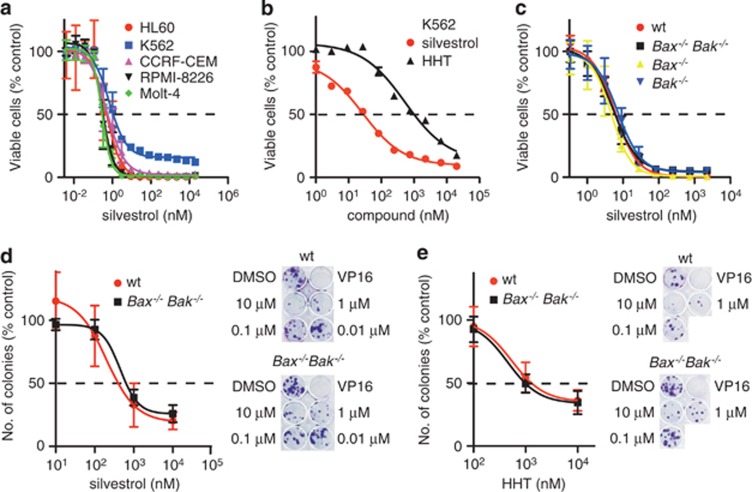Figure 5.
Translation inhibitors reduce cell viability by multiple mechanisms. (a) The translation inhibitors impair the proliferation of multiple cell types. The total numbers of viable leukemic cells were determined after 72-h exposure to silvestrol using the CellTiter-Glo assay (n=3 independent experiments). (b) The viability of K562 cells is impaired by treatment with protein synthesis inhibitors. K562 cells were treated for 24 h with the indicated concentrations of silvestrol or HHT, then cultured without compound for 3 days before the total numbers of viable cells were measured using the CellTiter-Glo assay (n=3). (c) The translation inhibitors impair the proliferation independent of Bax and Bak. The total numbers of viable MEFs were determined after 72-h exposure to silvestrol using the CellTiter-Glo assay (n=3 independent experiments). (d and e) Long-term (clonogenic) survival of MEFs after treatment with translation inhibitors is independent of Bax and Bak. Clonogenic survival of MEFs of the indicated genotypes was determined after 14 h of treatment with vehicle, etoposide (VP-16, 34 μM) or the indicated concentrations of (d) silvestrol or (e) HHT, followed by culturing cells without compound for an additional 7 days. Quantification is shown on the left panels and expressed as a percentage of control (vehicle, DMSO)-treated samples (n=3 independent experiments performed in duplicate). Representative stained plates are shown on the right. Data were normalized to vehicle (DMSO)-treated controls and the error bars represent the S.E.M.

